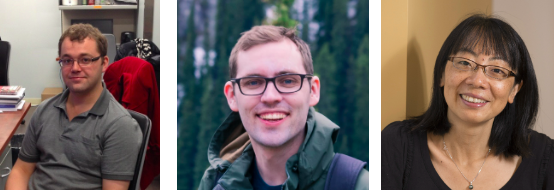With the Lichtman and Samuel labs, we are happy to announce the official publication of Connectomes across development reveal principles of brain maturation at Nature.
The first wiring map of C. elegans was generated by pioneer Dr. John White and his colleagues at MRC Cambridge more than 30 years ago. It was a composite of partial maps from several different worms due to technical limitations in sample fixation, serial sectioning, and image processing. Inspired by the rigor and vision of the legacy work, we used state-of-the-art electron microscopes to reconstruct the full brain of eight C. elegans individuals to learn how they change with age.
This is the first time that the entire structure of the brain is individually deduced and compared across developmental stages from birth to adulthood. These findings have powerful implications for understanding the fundamental rules that allow the brain’s developmental maturation to take place.
By examining every connection for every neuron, muscle, and glia, we found that the overall geometry, neurite structures, and neurite appositions barely change after birth, but new connections are selectively added as animals grow older. Over the course of development, these additions maintain the brain’s central decision-making circuitry, whereas sensory and motor pathways become substantially remodelled.
By examining the relationship between the structural properties in the newborn’s brain and the adult wiring patterns, we found a few properties and a few “rules” for selective synapse addition, allowing us to correctly predict the wiring patterns of the mature brain.
By analyzing these connections that are like wires in a computational network, we discovered that the new additions follow patterns and their collective changes serve one purpose — enabling effective information processing. Through identifying some key patterns of the brain’s development, we found that substantial connectivity differences make each brain unique.
We are both humbled and honored by this opportunity to continue the C. elegans connectomics work. We thank Dr. Daniel Witvliet, a former PhD student at our lab, for his rigor, talent, generosity, and extraordinary leadership. We thank all the authors, contributors, and collaborators who have made this work wonderful and this experience beautiful. Last and not least, we thank Dr. John White for his warmth, support, encouragement, and vigorous review of our work.
Funding: Canadian Institutes of Health Research (CIHR), the National Institutes of Health (NIH), and Human Frontier, along with support from Sinai Health Foundation and the Radcliffe Institute for Advanced Study at Harvard University.
Dr. Ben Mulcahy (l), Dr. Daniel Witvliet (c), Dr Mei Zhen (r)
Drs. Witvliet and Mulcahy led the study alongside scientists from Harvard’s Brain Institute, including Drs. Aravi Samuel and Jeff Lichtman.
